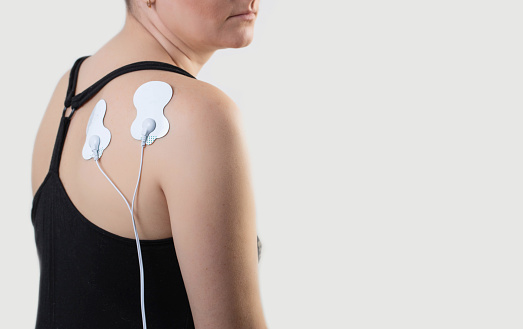-
Electric Stimulation Therapy: How Does It Work

Electric Stimulation Therapy (EST) is a type of physical therapy that uses low-voltage electrical currents to stimulate the muscles and relieve pain. The electrical stimulation is delivered through electrodes placed on the skin near the affected area and is designed to activate the underlying muscles, reducing muscle spasms, improving circulation, and promoting healing. EST is…
-
Electric Stimulation Therapy Hamstring

Electric Stimulation Therapy (EST) is a type of physical therapy that uses low-voltage electrical currents to stimulate the muscles and relieve pain. The electrical stimulation is delivered through electrodes placed on the skin near the affected area and is designed to activate the underlying muscles, reducing muscle spasms, improving circulation, and promoting healing. Electric stimulation…
-
Electric Stimulation Therapy For Spinal Cord Injury

Electrical stimulation therapy (also known as spinal cord stimulation) is a treatment option for individuals with spinal cord injury. The therapy involves the delivery of electrical impulses to the spinal cord to reduce pain and improve function. The stimulation is delivered through electrodes placed on the skin near the spinal cord. These electrical impulses interfere…
-
Electric Stimulation Therapy For Bell’s Palsy

Bell’s palsy is a condition that causes sudden weakness or paralysis on one side of the face. Electric stimulation therapy is a form of physical therapy that uses electrical impulses to relieve pain and promote healing. In the case of Bell’s palsy, electrical stimulation can be used to help improve the function and control of…
-
Electric Stimulation Therapy Contraindications

Electric Stimulation Therapy (EST) is a type of physical therapy that uses low-voltage electrical currents to stimulate the muscles and relieve pain. The electrical stimulation is delivered through electrodes placed on the skin near the affected area and is designed to activate the underlying muscles, reducing muscle spasms, improving circulation, and promoting healing. EST is…
-
Electric Stimulation Therapy Chiropractic

Electric Stimulation Therapy (EST) is a type of physical therapy that uses low-voltage electrical currents to stimulate the muscles and relieve pain. The electrical stimulation is delivered through electrodes placed on the skin near the affected area and is designed to activate the underlying muscles, reducing muscle spasms, improving circulation, and promoting healing. EST is…
-
Electric Stimulation Therapy Benefits

Electric stimulation therapy, also known as neuromuscular electrical stimulation (NMES) or electrotherapy, is a form of physical therapy that uses electrical impulses to stimulate muscles and nerves. This therapy is used to treat a variety of conditions such as chronic pain, muscle weakness, and injuries. It has been used in healthcare for over a century,…
-
Electric Stimulation Therapy

Electric stimulation therapy, also known as electrical stimulation therapy or neuromodulation, is a type of therapy that uses a small electrical current to stimulate the nerves and muscles in the body. This therapy is used to treat a wide range of conditions, including chronic pain, neurological disorders, musculoskeletal disorders, and mental health conditions. Electric stimulation…
-
Electric Stimulation Occupational Therapy

Electrotherapy massagers are a type of physical therapy device that uses electrical impulses to stimulate the muscles and improve muscle function and strength. These devices are typically handheld and come equipped with various attachments that can be placed on different areas of the body, such as the back, neck, or legs. The most common type…
-
Electric Stimulation For Bell’s Palsy

Bell’s Palsy is a medical condition characterized by sudden, unilateral facial muscle weakness or paralysis. It is caused by inflammation of the facial nerve (cranial nerve VII) which results in the inability to control the muscles on one side of the face. Bell’s Palsy can affect people of all ages, but it is most commonly…
